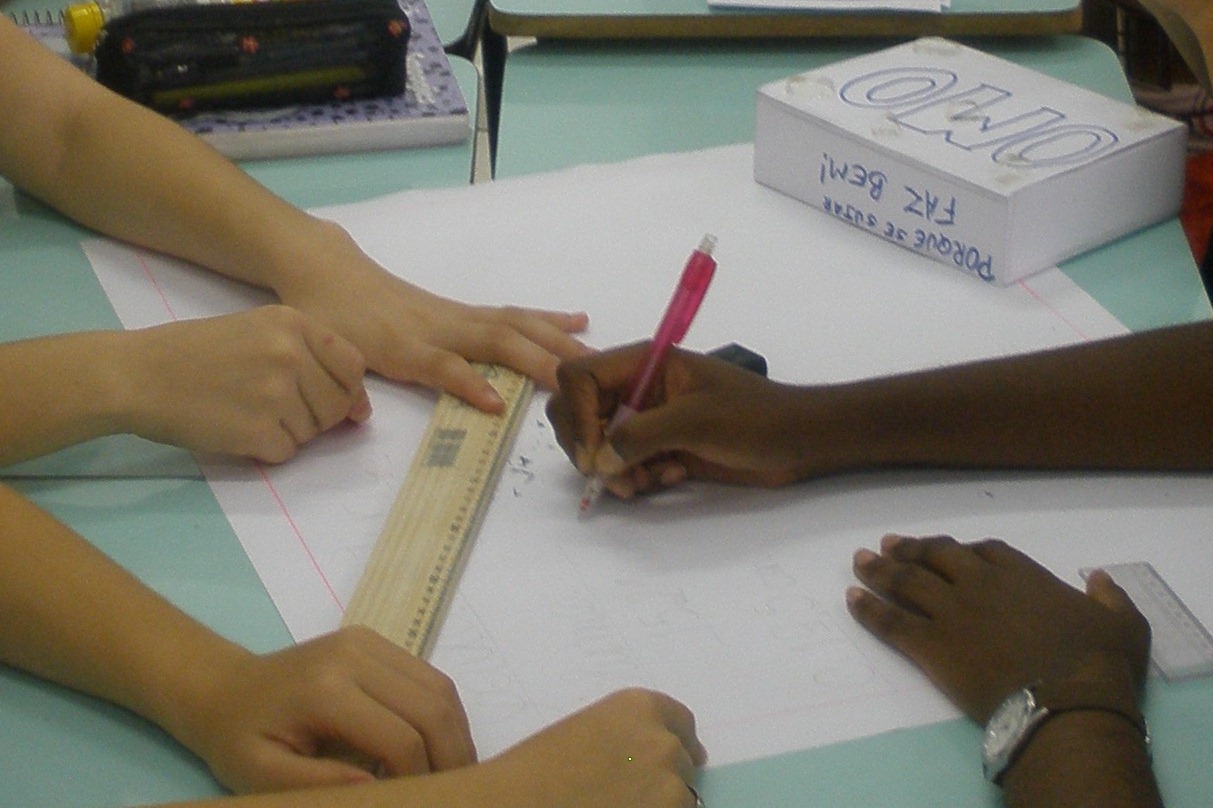Ensino de Geometria Espacial métrica
uma experiência com modelagem
Palavras-chave:
Ensino de Geometria, Engenharia Didática, Modelagem MatemáticaResumo
O estudo de geometria permite o desenvolvimento de habilidades e conhecimentos em relação a fatos e questões do cotidiano. Entretanto, os resultados em exames oficiais apontam uma grande defasagem no ensino e aprendizagem, principalmente em geometria espacial. Esta pesquisa está inserida no contexto do ensino e aprendizagem da geometria espacial na educação básica, em particular, à métrica dos sólidos geométricos. O objetivo do trabalho é apresentar uma sequência didática utilizando a modelagem matemática como alternativa metodológica, tendo em vista seu potencial para quebrar a dicotomia existente entre a matemática escolar e a matemática presente nas mais variadas situações do cotidiano. A sequência foi desenvolvida em duas escolas públicas junto a estudantes do ensino médio. Para validar a sequência proposta, a pesquisa foi fundamentada nos princípios da engenharia didática e a análise foi realizada utilizando-se registros em diário de campo, registros das atividades desenvolvidas pelos estudantes e aplicação de questionários e testes diagnósticos. Os resultados obtidos levaram a concluir que houve um avanço por parte dos estudantes na apreensão de conceitos de geometria plana e espacial.
Referências
ARTIGUE, M. Ing_enierie didactique. In: Brun J. (org.). Didactique des Math_ematiques.
Lausanne-Paris: Delachaux, 1996.
BARBOSA, J. C. Modelagem na Educação Matemática: contribuições para o debate teórico. In: REUNIÃO ANUAL DA ANPED, 24, 2001, Caxambu. Anais... Rio de Janeiro: ANPED, 2001.
BASSANEZI, R.C. Ensino-aprendizagem com modelagem matemática: uma nova estratégia. São Paulo: Contexto, 2002.
BIEMBENGUT, M. S.; HEIN, N. Modelagem matemática no ensino. 3. ed. São Paulo: Contexto, 2003.
CHAVES, M. I. A.; SANTO, A. O. E. Modelagem matemática: uma concepção e várias possibilidades. Bolema, Rio Claro, ano 21, n. 30, p. 149 a 161, 2008.
COSTA, M. A.; LIMA, S. R. R. Ensino de Prismas: uma análise a partir do livro didático. 2010. 74 f. Trabalho de Conclusão de Curso - Universidade Federal de Alfenas, Alfenas, 2010.
FRANCO, B. S. C.; OLIVEIRA, M. J. R. Ensino de geometria espacial métrica: uma experiência com modelagem. 2011. 109 f. Trabalho de Conclusão de Curso – Universidade Federal de Alfenas, Alfenas, 2011.
LIMA, E. L. Medida e forma em geometria: comprimento, área, volume e semelhança. Rio de Janeiro: SBM, 1991.
MINAS GERAIS. Currículo Básico Comum (CBC). Belo Horizonte: Secretaria de Estado de Educação de Minas Gerais. Acesso em: 30 out. 2011. Disponível em
http://crv.educacao.mg.gov.br/sistema_crv/index2.aspx??id_objeto=23967#
PAIS, L. C. Didática da matemática: uma análise da anuência francesa. Belo Horizonte: Autêntica, 2008.
SANTOS, R. C; BACCARIN, S. A. O. Embalagens. Revista do Professor de Matemática, n. 60, 2006.

Downloads
Publicado
Como Citar
Edição
Seção
Licença
Proposta de Política para Periódicos de Acesso Livre
Autores que publicam nesta revista concordam com os seguintes termos:
- Autores mantém os direitos autorais e concedem à revista o direito de primeira publicação, com o trabalho simultaneamente licenciado sob a Licença Creative Commons Attribution que permite o compartilhamento do trabalho com reconhecimento da autoria e publicação inicial nesta revista.
- Autores têm autorização para assumir contratos adicionais separadamente, para distribuição não-exclusiva da versão do trabalho publicada nesta revista (ex.: publicar em repositório institucional ou como capítulo de livro), com reconhecimento de autoria e publicação inicial nesta revista.
- Autores têm permissão e são estimulados a publicar e distribuir seu trabalho online (ex.: em repositórios institucionais ou na sua página pessoal) a qualquer ponto antes ou durante o processo editorial, já que isso pode gerar alterações produtivas, bem como aumentar o impacto e a citação do trabalho publicado (Veja O Efeito do Acesso Livre).
